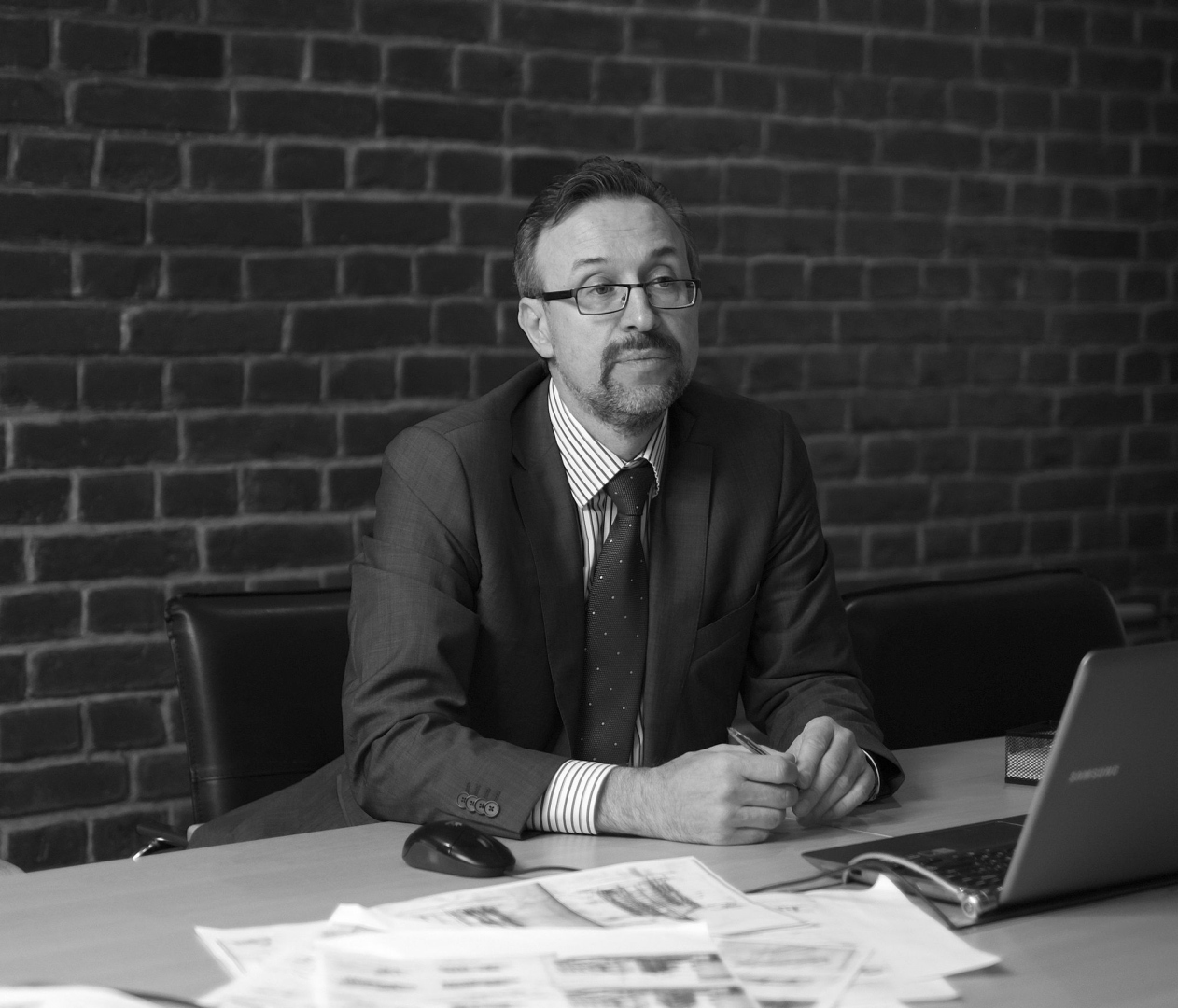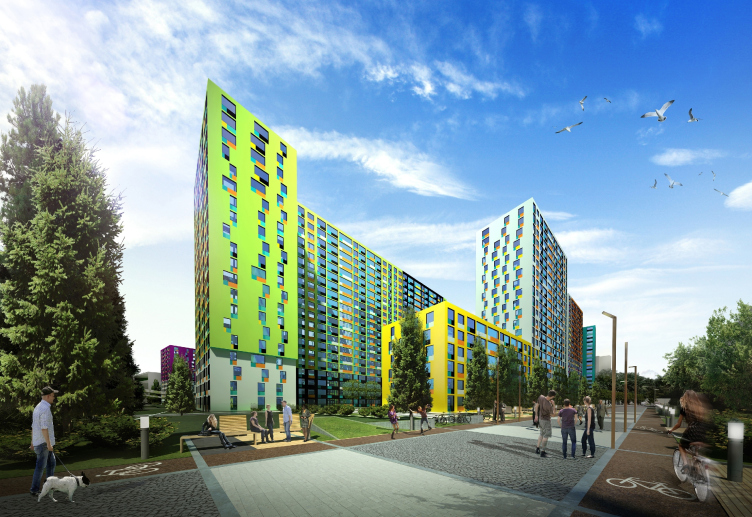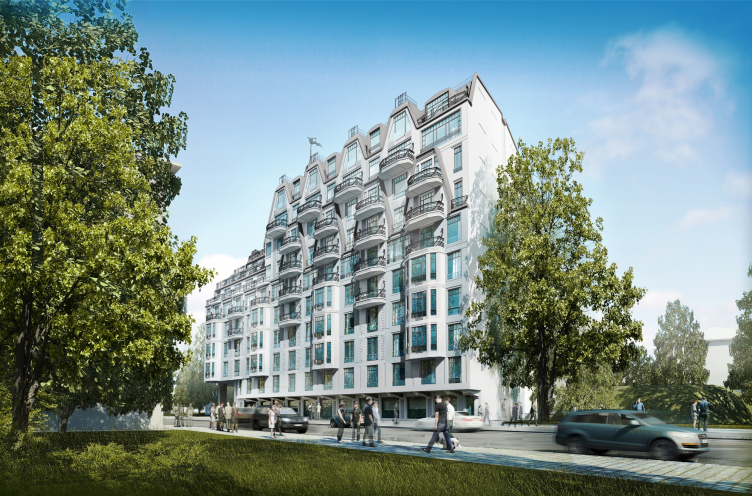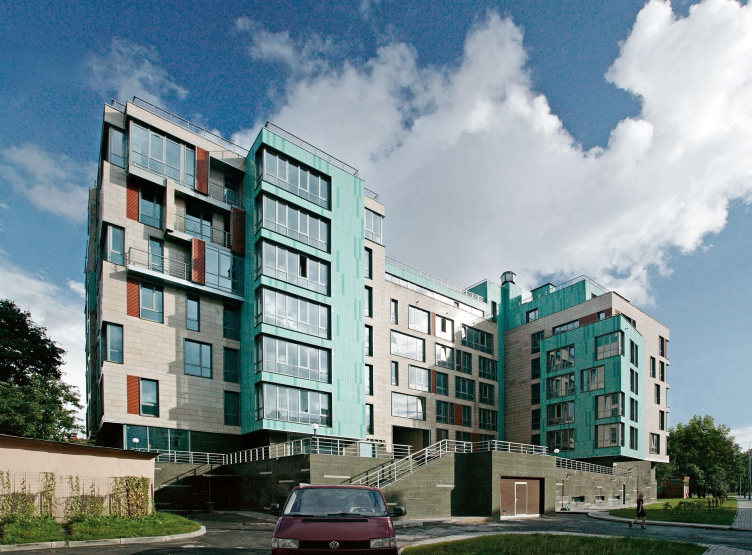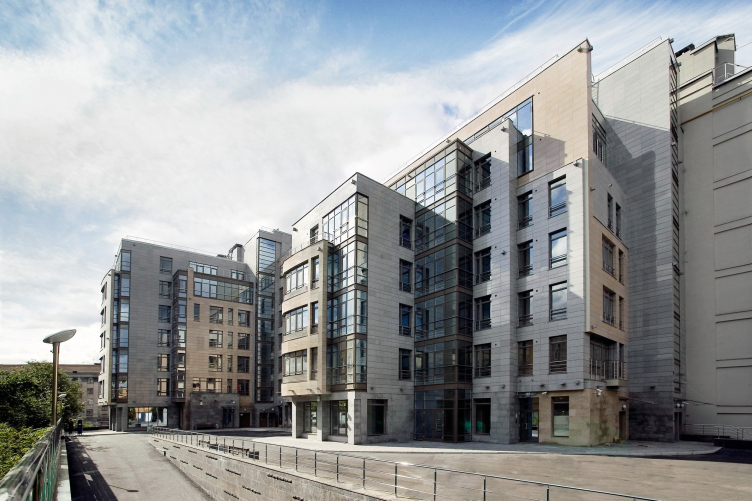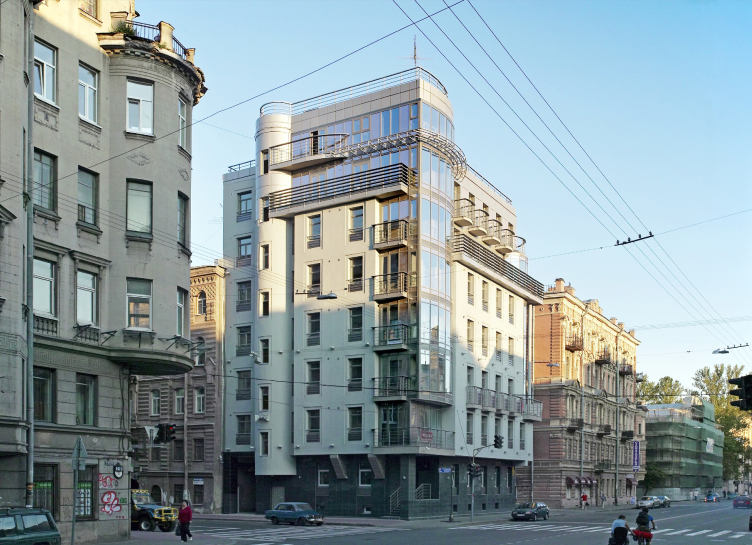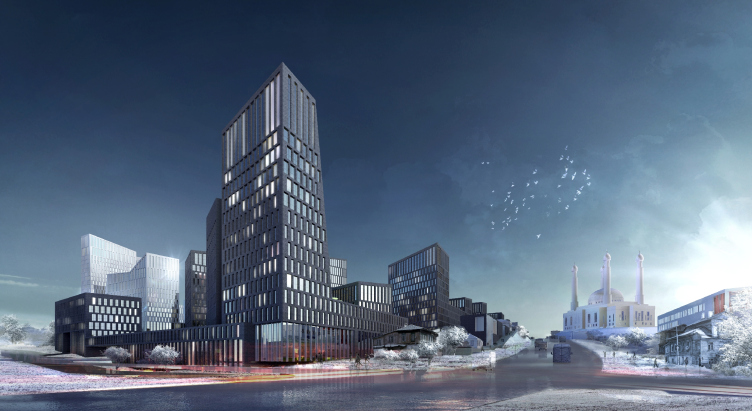Archi.ru:
– How did it all start for A.Len?
Sergei Oreshkin:
– In the west, it is often the case that an architect makes it big out of the blue, and pretty quick. Many of the famous European architectural companies made themselves known via various competitions when still in the budding years – Bjarke Ingels from BIG, the guys from Snøhetta, to name but a few. Another group consists of large companies that came around after the Second World War: gmp Architekten, Foster, and so on. These were created by people who are well into their seventies now. Russia, on the other hand, is a different matter – we have different ways of growing. For example, we've got architects who made it big after they landed a job at this or that project institute because they quickly secured large-scale serious projects. This is one narrative. The other narrative – and this is how it worked for A.Len – is when a company grows by degrees: you start with designing small private residences, then your orders grow ever bigger until you get to the peak of your career, which I hope is our case. I began studying architecture at 14 (college-work-army-university), and finished at 28; now I am 54. Right after I graduated from the university (probably, I looked mature still at that tender age) I was offered a position of the chief architect of the cities of Vologda and Cherepovets but I opted for the project institute where, it should be said, they valued me very highly. Meanwhile, after I started my own company [A.Len was created in 1991 – editor’s note] at the outset of our career we had to do small-time orders – private residences, little settlements, and we never were out of work. This was a great educational experience for us, and in this connection I often recollect Frank Lloyd Wright whose career was a revelation to me. The path of Wright has something in common with ours, when you know the author for his mature works, and then you learn that he designed private residences in his formative years.
– In which direction does your company evolve, and how would you describe the current stage of your development?
– The question that I am asking myself today most of all is whether we will be able to keep up the further growth of our company in spite of all the economic crises that keep shaking this country. I am also worried if I will have enough health and creative energy to face the new challenges. You grow by degrees – experience comes with years, and only way later on down the line you begin to feel at home with the profession, begin to know what should be done and how, and the difficulties of construction no longer scare you away. Today I have a feeling that we are indeed getting to a whole new level. It’s strange but this economic crisis also brought a feeling of relief to us. Maybe it’s because you cannot make any forecasts anymore: we have work – fine, we don’t – no problem, we will create some ourselves. Today, we design things the way we want. If, at the moment, the client is not OK with what we are showing to him, that’s alright as well because we’ll be able to prove our point later; if the client likes what we do – great! Such attitude helps us to elevate our company to a higher level. If you try too hard to please the client you will hardly be able to get the best result you’re possibly capable of. Luckily, today’s clients have also changed for the better – they are ready to listen to what we say. And as for the projects that can possibly spoil our portfolio and be detrimental to our reputation – we just don’t do them. Right now, we have a great period, and we’ve got some young talent, the guys that really live on architecture. I would say that we are going through a phase of “defending our creative ego”.
– And what is the essence of your creative ego?
– Oh, it’s the classic narrative: when you’re under forty, you want to impress people, but when you grow older and wiser you want to do things that are well-balanced, clear and dignified, and at the same time well-reasoned. But it will be a pity for me if, trying to achieve this clarity, I lose the young straightforwardness and even some certain naivety. I believe this is very important to me. When still in my college years, I was after creating unpredictable things. And today, 90% of the Russian architecture is depressingly predictable. And don’t get me wrong – an unpredictable building doesn’t necessarily have to be all lopsided or eccentric-looking, not at all! Today, we see a lot of young (and not only young) architects that, say, working in the economy-class segment, their only resource a bucket of stucco, come up with the right things. This is practically the way it was in the 1930’s when they had little resource but the architects worked with the volume, town-planning ideas, and, as a result, an unbelievable emotional effect was achieved. So, today our motto is: maturity without losing the well-balanced architecture, pure architecture that keeps its identity with a healthy share of naivety.
– The name of “A.Len” stands for “Architectural Leningrad”. Is it worth our while looking for some little nostalgic notes in it, and how did it come around, anyway?
– Our company was founded in the early 90’s when Saint Petersburg was still called Leningrad. Pretty much any company name was an acronym back then: Lenspetssmu, Lentech, A.Len, for that matter. These companies marketed themselves as regional. Later on, we decided to stick to our name, and I was never into waving my personal name around. Today, our company name clearly states that our company is not a young one.
– Do you have any favorite projects or buildings?
– I stand by my performance, and we haven’t failed a single project. There are things that grow better with time. You do have a feeling of regret from time to time when somebody gets in your way – it is either the approving organization or the construction company that is eager to make its “contribution”, and ultimately leaves the project devoid of any individuality. Sometimes we cannot convince the client that the solution which we are proposing is in fact the best one – but such instances are getting fewer and farther between because we always act in our client’s best interests.
You do change with age, of course: at thirty I would have done it this way, at forty in another – nobody does architecture from nineteen to eighty in exactly the same style. The whole point that I’m trying to make is that, probably, my most favorite works are the latest ones. Because you are into them! The project of the residential complex “Me, Romantic” which we did in the economy class is something that I really like. It was underestimated but I already noticed that some of the ideas that we came up with when we were designing that project have already inspired some of my architectural colleagues.
I would also mention the Gasprom business center on the Varshavskaya Street – its morphology has already been tested by various architectural teams, each one of them doing it in their own unique way: this is a grid shell inside of which we placed a huge ball of volumes. It is a rather mysterious project, just as its client.
Sometimes you have a nostalgia trip and try your hand at Art Nouveau: we are currently doing a house for YIT developers in the Chapaeva Street – it’s the fairy tale sort of a “castle” house, a pileup of volumes and masses, this “knitted” or “lacy” kind of architecture. Then, there is this romanticism of the Petrograd side, and I sometimes feel like working in this line. This is not quite our approach because we associate ourselves more with the avant-garde tradition but I think there is definitely something about the romanticism architecture.
Then there is this house at the Konstantinovsky Avenue – we drew it like an obvious piece of European modernism. We used copper and natural stone, and what we ultimately got was a very lively and picturesque façade. This house even has a fan club of its own because such architecture is rarely to be found in this city. It is mostly drawn by quite young architects that do not even always get to doing the real city projects, while if we are to look for acclaimed architects working in this line, they are only to be found in Moscow: Skuratov, Levyant, Skokan. The modernism of this house is based on the Russian avant-garde and constructivism, 3D design, and working with the form.
Another interesting project is the house in the Graftio Street – it is a “slab” of a house, yet, at the same time, it’s a “cabbage” of a house – it has a lot of layers, each of which slightly peels off and exposes the next one, the depth of the space. It has something from Paul Rudolph, something from Richard Meyer. This house keeps on winning various awards, and last year it was awarded the Diamond Diploma of The Worldwide Club of Petersburgers
– Do you enjoy building your projects in the historical center?
– Yes, of course! This is the place where the magic aura gets straight under your skin. There are two basic approaches here: either you want to stand out from the historical background or you want to merge with it. It’s either contextual or non-contextual work. And it is the non-contextual architecture that usually gets slammed, with the architect labeled as a parvenu, but, on the other hand, you can recall positive examples as well: the “dancing house” by Frank Gehry in Prague, or the “mirror house” by Hans Hollein in Vienna across from the cathedral. There is also another approach: you come to the place and find out if it’s in need of accentuation. If it is, you come up with some sort of a centerpiece, and if the environment is saturated as it is, and you see that building something bold would lead to over-saturation, you try to handle it as delicately as you can. For example, we did this “Egoist” house – there is a really rich environment there, everything is decorated, and we wanted to ultimately get a peaceful house; Leonid Lavrov later on termed it as “eclectic constructivism”. In effect, it was indeed originally designed as a constructivist building but later on in the course of the negotiation with the city officials and the Committee on State Control, Use and Protection of Historical and Cultural Landmarks we had to listen to them and make a few changes so as the house would meet their requirements.
– You work a lot in the regions. What’s different about working in the regions from working in Saint Petersburg?
– We’ve been getting a lot of invitations recently – Saransk, Ufa, Kazan, Yaroslavl, Novosibirsk – and these are the result of our professional acclaim. For the regional clients this means prestige; sometimes they even mistake us for a Moscow company. In the regions, a Saint Petersburg architect gets a lot more respect than he does in his hometown. In this city, the client may start teaching you how to draw façades and do all sorts of nasty stuff; it’s different in the regions.
– What are you working on now?
– Currently, we are doing a large-scale residential area in Ufa; it’s a very interesting project, and I’m sure it will turn out great. We do not get down to actual work until we have studied a whole lot of historical literature in order to find out just what had been going on upon this particular land site in the past centuries. In Ufa, we got a location that for some reason would scare the local architects away. It turned out that there used to be a Kremlin on that spot, a few rivers would bleed into one, a new 3000-strong mosque had recently been built, there is a mountain nearby, everything is pretty odious, and the terrain is just terrible, to cap it all. But we still entered that competition. Ufa has a very progressive atmosphere in it; if the city keeps up the great work it will in no time rival Moscow in terms of architecture. People there draw some really right things. This is the way that back in the day the strong Nizhny Novgorod school was formed which has seen better days, regretfully. Under the governor Boris Nemtsov and the then-main-architect-of-the-city Alexander Kharitonov it was flourishing. Today the bright architectural works in Nizhny Novgorod are ever fewer, and at those days it was brimming with architecture – a comparatively small city with about a dozen of competing architectural companies, five of them being really good. Currently, Ufa is in the same situation as Nizhny Novgorod was about 15 years ago.
– What is your opinion of the architectural competitions and contests?
– For the last two years, we've been actively participating in competitions, no fewer than 10 ones a year. We appreciate this experience: an average competition does not weigh us down at all, we can do whatever we want, and some of the competition projects come out really brilliant.
– You have a Livejournal blog (oreshkin.livejournal.com), why did you decide to start it?
– We process a very large flow of information, some of which, I believe, could be interesting to a large number of people. I make a lot of posts when we do a competition project – this is the first sign that we are up to something; and some of the materials “leak” into our blog. This is a great tool; it is chronologically organized, it is current, and you form the subject with the tags. Our Livejournal blog is also an education tool for the budding architects, and my colleagues read it too. Initially, it was my personal blog about my work in A.Len but now it predominantly covers the materials that serve as the basis for the architectural design. We select the architecture that does not bring about any issues in terms of quality. If somebody is interested, they could read our blog and see where A.Len is going, what we like and what we don’t like.

